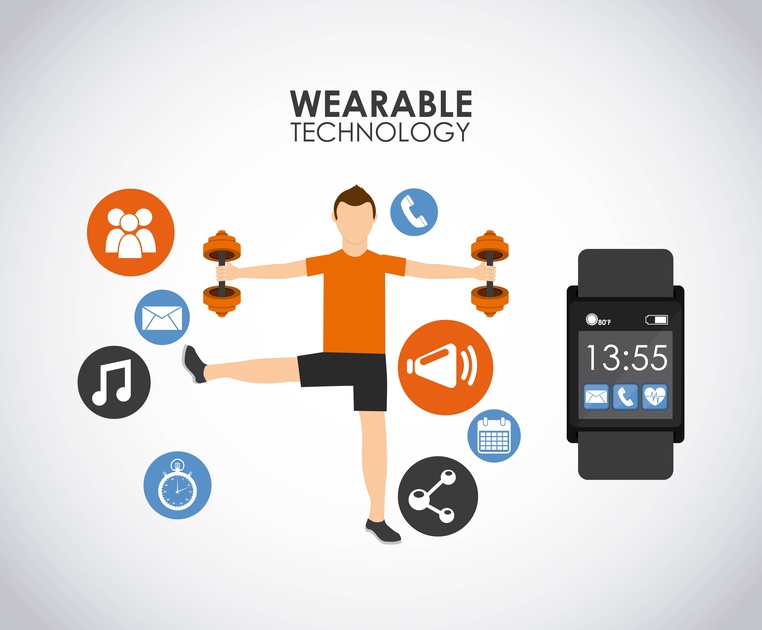
The papers carried news recently of cardiac surgeons in Warsaw using Google Glass and an optical display mounted on the head to restore blood flow in an important artery of a patient. While the news highlighted the pioneering nature of the surgery many will agree that even this innovative use of the Glass is not really a surprise to us anymore. Wearables have already made a dent in the public consciousness – IDC’s most recent “Worldwide Quarterly Wearable Device Tracker” put the size of the market at over 72 million devices being shipped in this year, up over 173% from last year. The growth is predicted to continue reaching over 155 million units in 2019. That’s a lot of bands, watches, glasses and other devices out there.
First, though, what is fuelling this rise? A good candidate driving growing adoption of wearables is the rise of the Internet of Things (or IoT). Juniper Research estimates a 285% increase in the number of IoT-enabled devices between now and 2020. The interesting point Juniper’s research brings out is that the growth is not likely to be restricted to the consumer space but is likely to be more broad based including in sectors like retail, energy & utility, governance, and even agriculture. The likely use cases are many but of direct importance to our everyday lives are these 3 sectors where wearables are poised to make an impact.
Healthcare is one sector that many are already using wearables in.
- Currently, the most popular use case is in monitoring and managing personal health and wellness by keeping track of critical elements of our day like how much we eat, rest or exercise. FitBit and JawBone have become mainstream. These devices are already helping millions of people become (& stay) healthier.
- The most exciting developments are related to how technologies like NFC are being leveraged in sensors. We had written an earlier post about the growing presence of NFC in delivering care that lists several of these examples including sticker based sensors and even sub-dermal implants that are already being leveraged to gather vast amounts of information from patients with the end objective of improving the quality of care they receive.
- Maksymilian P Opolski, a member of the Institute of Cardiology team from the case referred to earlier offers encouragement and points to future potential, “This case demonstrates the novel application of wearable devices for display of data sets in the catheterization lab that can be used for better planning and guidance of interventional procedures.”
How about the impact of Wearables in the workplace?
- Without touching upon industry-specific use cases, of which there are many, the general workplace seems to be undergoing a wearables revolution. It’s not hard to see why – a study by the University of London’s Institute of Management Studies, called “Human Cloud at Work” found that wearables could bring about an increase of 8.5% in productivity and 3.5% in employee satisfaction. A lot of the productivity gains are slated to emerge from the integration of data gathered across various devices an employee uses in and around the workplace.
- There are also innovative use cases of employee authentication being done through wearables – thus eliminating the use of cumbersome passwords, PINs and the like.
- Organizations are also going a step further in some, more, controversial ways. Data Science company, Profusion, ran a program where they strapped on FitBits to 31 volunteers from among their staff and tracked an array of personal metrics from them 24 * 7. They then used this data to try to categorize the staff and seek actionable intelligence that could be used to help them become more effective.
- In a slightly less intrusive example BP gave FitBits to employees and rewarded them as they achieved personal health related goals – the payoff for BP, apart from healthier employees, was reduced employee health insurance premiums.
Education is another area where wearables are slated to have a big impact.
- There are devices like Muse, a headband that senses brainwaves, which is being used to monitor the response of the class to ongoing lessons.
- Augmented Reality is an exciting technology of particular use in the education space. Augmented reality player Harmony has an app called Brain AR that allows students to virtually “touch and feel” the insides of the brain.
- The benefits to the learners are many as Jason Higgins of Harmony says, “The key benefit is that users can explore and interact at their own pace, allowing for simplified review of learning. Studies show that AR can also increase the speed and retention of learning in addition to widening the spectrum of accessibility within groups of pupils.”
It would seem that the potential is virtually limitless. Get set for the world to become a much more wearable-friendly place and to encounter wearables in more and more situations in our daily life!






